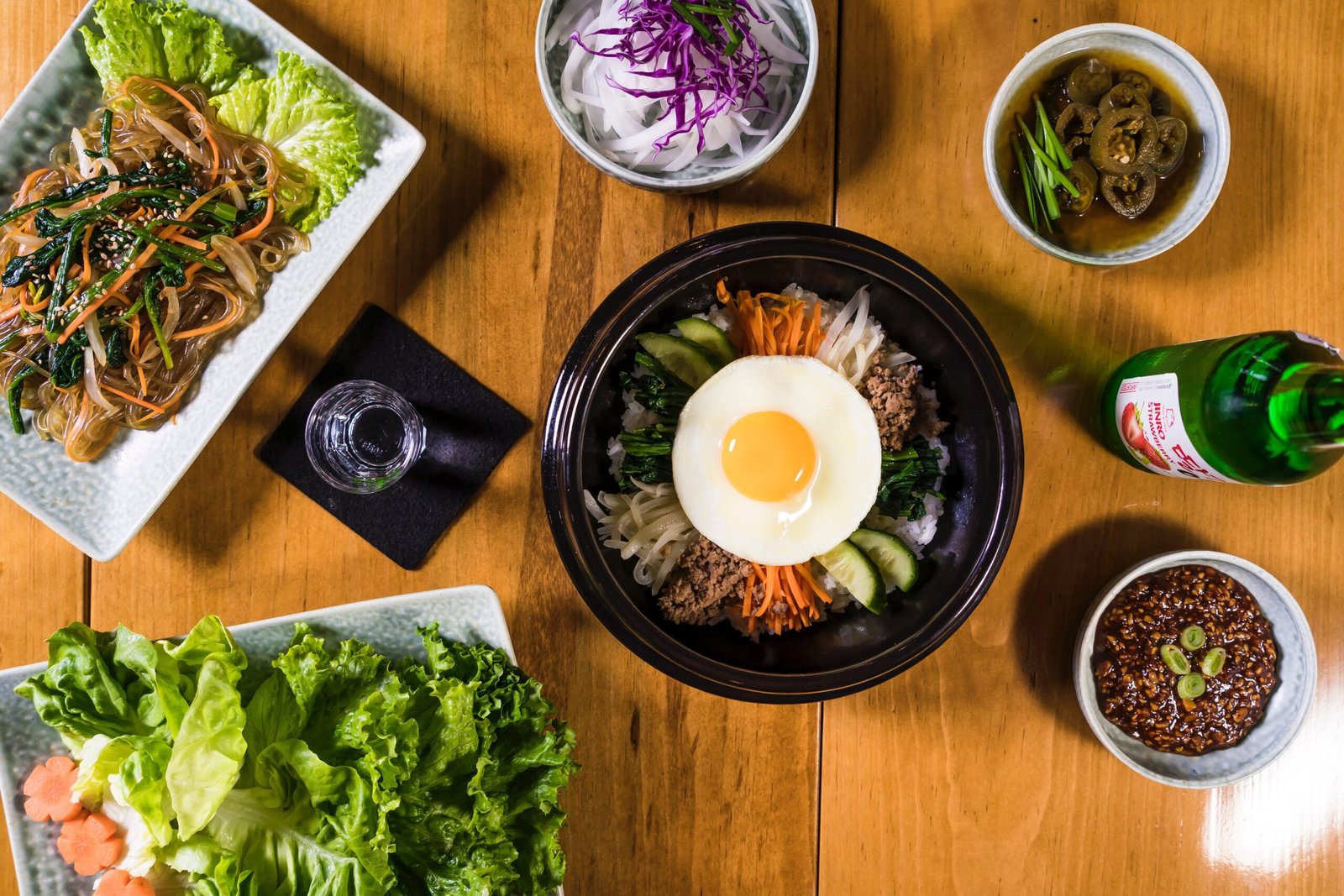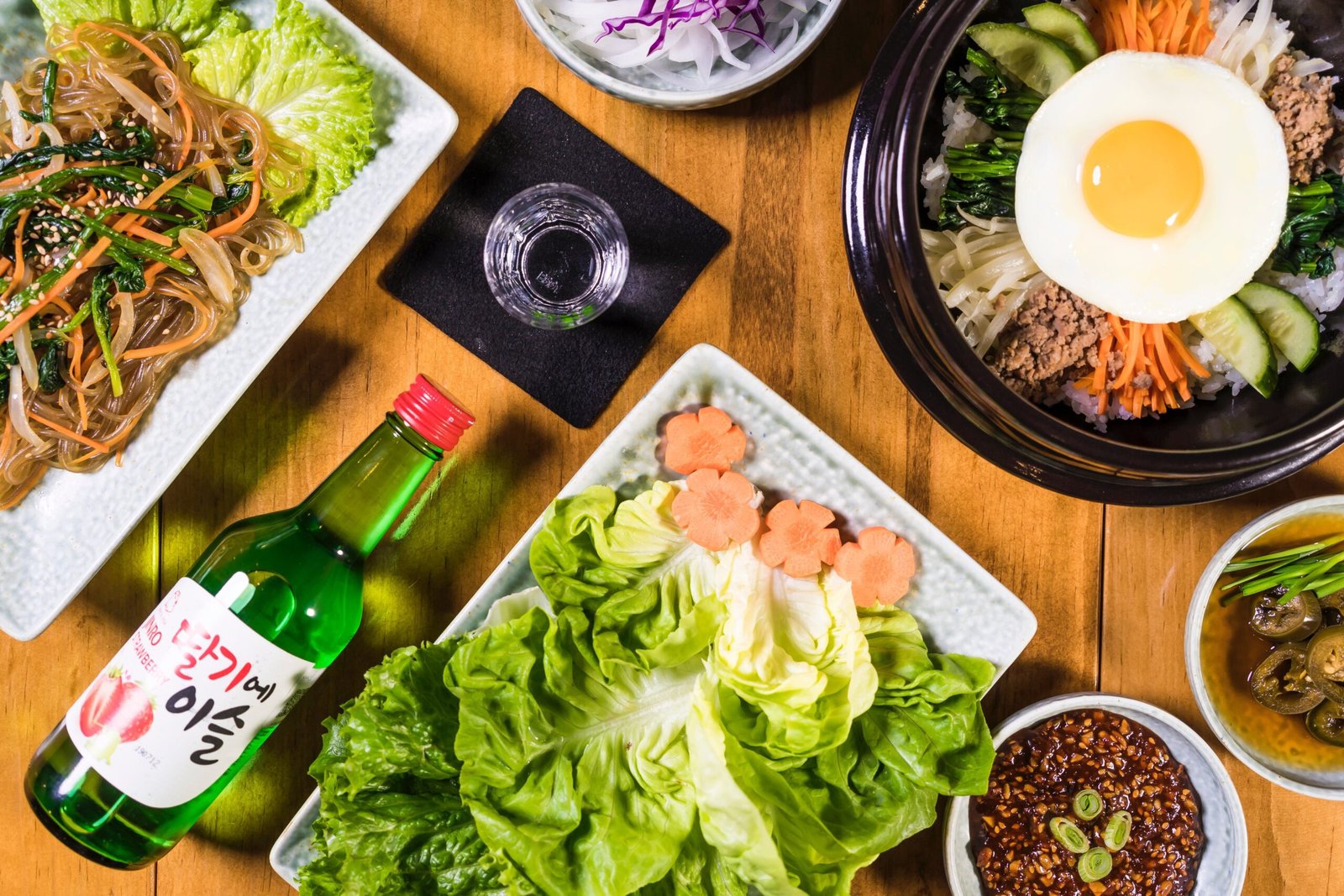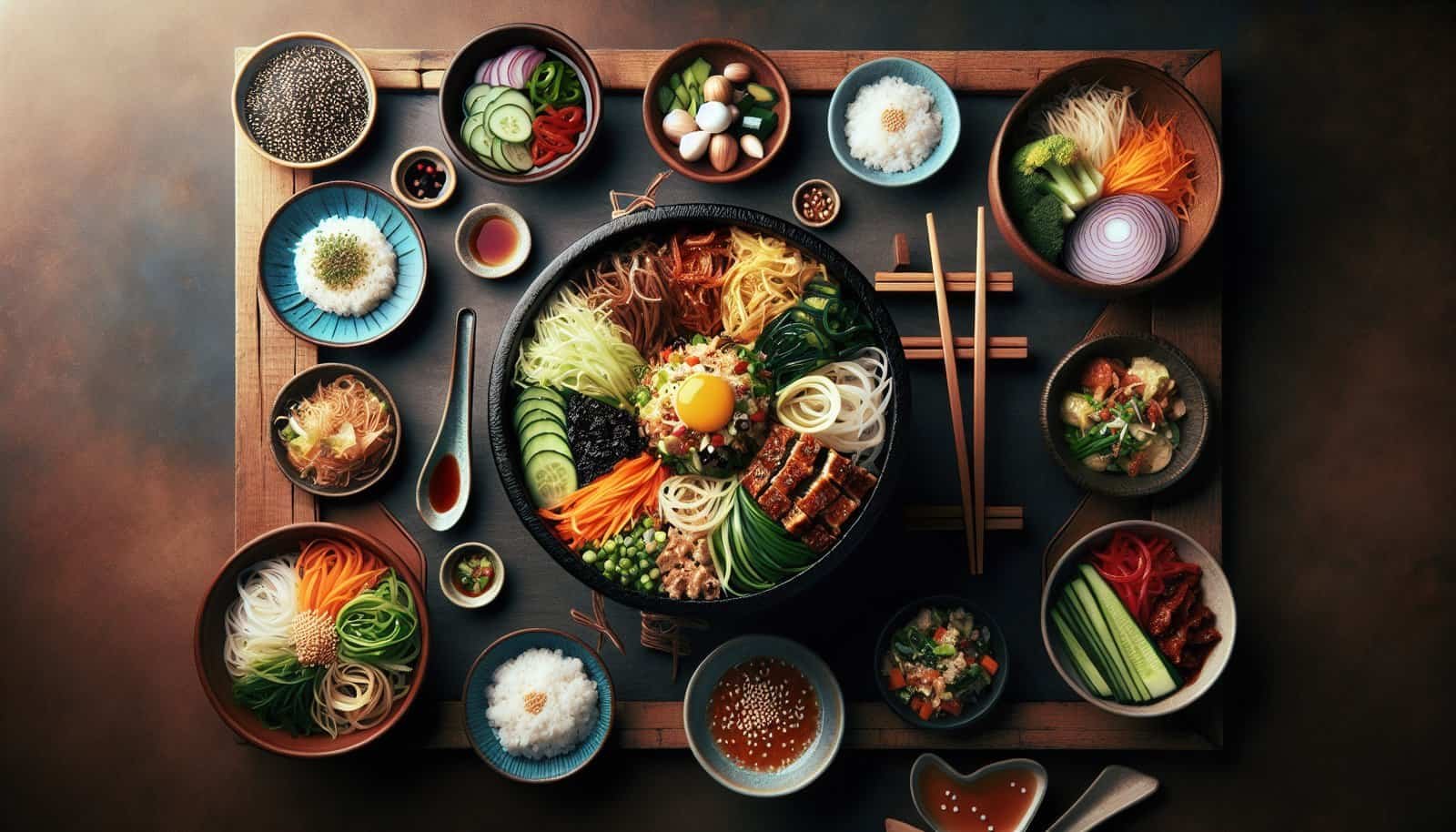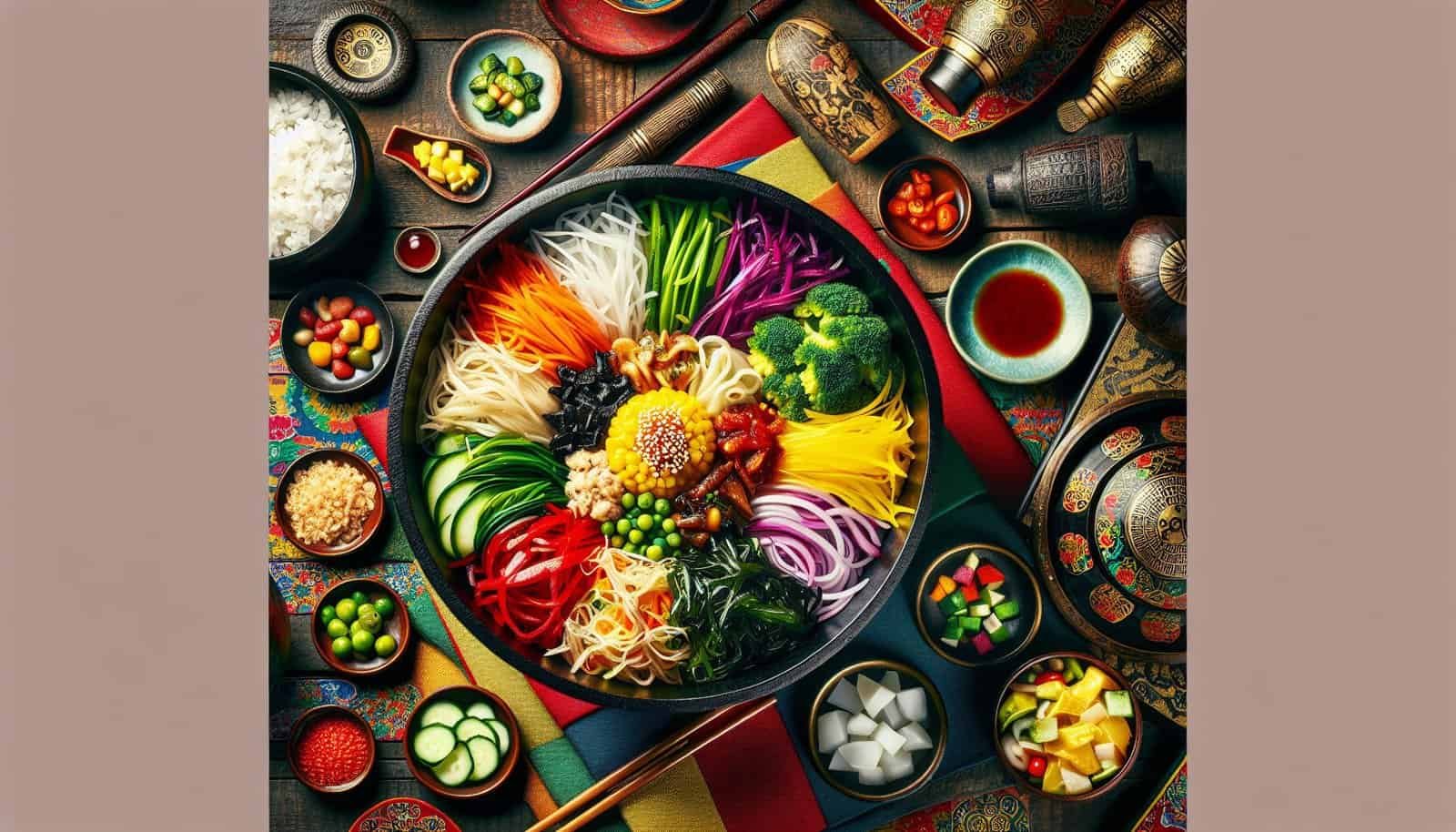Have you ever wondered about the historical significance behind the beloved Korean dish, bibimbap? This iconic blend of rice, vegetables, meat, and flavorful sauce has a fascinating history that stretches back to the royal courts of ancient Korea. Beyond its mouthwatering presentation, bibimbap offers a glimpse into the cultural traditions and culinary heritage of the Korean people. Let’s explore the stories and legends that surround this delectable dish, and gain a deeper understanding of its significance in Korean history.

The Origins of Bibimbap
Traditional Korean Cuisine
Bibimbap is a quintessential dish in traditional Korean cuisine. With a history dating back centuries, it is deeply rooted in Korean culinary traditions and cultural identity. The word “bibimbap” itself translates to “mixed rice,” which perfectly captures the essence of the dish. It consists of a bed of cooked rice topped with an array of colorful and flavorful ingredients, such as seasoned vegetables, meat, soybean sprouts, and a fried egg. These ingredients are beautifully arranged to create a visually appealing dish that is as pleasing to the eyes as it is to the taste buds.
The Influence of Royal Cuisine
Bibimbap’s origins can be traced back to the royal cuisine of Korea, which played a significant role in shaping this beloved dish. Royal cuisine, also known as “gungjung cuisine,” was primarily prepared for the royal family during the Joseon Dynasty. The art of creating exquisite and visually stunning dishes was a testament to the wealth and power of the royals. Bibimbap was one such dish that emerged from the royal kitchen and eventually made its way into the hearts and homes of ordinary Koreans.
The Ingredients and Preparation of Bibimbap
Variations in Ingredients
The beauty of bibimbap lies in its versatility and the wide range of ingredients that can be used to create different variations of the dish. While some traditional ingredients include namul (seasoned vegetables), bulgogi (marinated beef), and gochujang (Korean chili paste), modern interpretations have expanded the possibilities. Seafood, tofu, mushrooms, and even fruits have found their way into contemporary versions of bibimbap, adding unique flavors and textures to this beloved dish. The variety of ingredients reflects the diverse regional cuisines within Korea and allows for personalization and adaptation to individual tastes.
The Art of Mixing
One of the unique aspects of bibimbap is the way it is consumed. Rather than being served pre-mixed, bibimbap is presented with its ingredients neatly arranged on top of the rice. The diner then takes an active role in mixing all the components together, ensuring that the flavors blend harmoniously. This act of mixing is not only culinary but also symbolic, representing the importance of balance and unity in Korean culture. The gentle stirring of the ingredients creates a medley of flavors and textures, resulting in a satisfying and wholesome meal experience.
The Role of Seasonality in Bibimbap
Another crucial element in bibimbap is the emphasis on seasonality. Traditional Korean cuisine places great importance on using fresh, seasonal ingredients to create dishes that are in harmony with nature. Bibimbap is no exception. Throughout the year, various vegetables and ingredients are incorporated into the dish, depending on their availability and peak flavors. From the vibrant greens of spring to the hearty root vegetables of winter, each season brings a unique twist to bibimbap, ensuring that it remains a celebration of nature’s bounty.
The Royal Cuisine of Korea
The Importance of Royal Dishes
Royal cuisine holds a special place in Korean culinary history. It was a reflection of the opulence and sophistication of the royal court, with meticulous attention paid to every aspect of preparing and presenting the dishes. Royal dishes were not only meant to satisfy hunger but also to showcase the culinary skills and creativity of the royal chefs. The ingredients used were of the highest quality, and the cooking methods employed were intricate and time-consuming. These lavish feasts became an integral part of Korean culture, preserved and passed down through generations.
The Connection to Cultural Identity
Royal cuisine, including bibimbap, played a significant role in shaping Korean cultural identity. It was not merely a form of sustenance but a way to express social hierarchy, respect for tradition, and appreciation for the finer things in life. The attention to detail and the artistry displayed in royal dishes served as a symbol of Korean craftsmanship and sophistication. As such, these dishes came to represent the cultural heritage and national pride of the Korean people. Today, even though royal cuisine is no longer exclusive to the royal court, it continues to be revered and cherished as an integral part of Korean culinary heritage.
Bibimbap and Royal Cuisine
Bibimbap as a Royal Dish
While bibimbap is now enjoyed by people from all walks of life, it had humble beginnings as a royal dish. During the Joseon Dynasty, bibimbap was originally served during royal banquets and special occasions. Its inclusion in these grand feasts highlighted its significance and showcased the skill and creativity of the royal chefs. The beautiful arrangement of colorful ingredients and the delicate flavors made bibimbap a standout dish among the other royal delicacies.
Bibimbap and Historical Significance
Bibimbap’s historical significance extends beyond its association with the royal court. It served as a means of preserving and perpetuating Korean culinary traditions and cultural practices. The preservation of traditional dishes, such as bibimbap, allowed Koreans to maintain a connection to their roots even during periods of political and social upheaval. As Korea went through various historical challenges, bibimbap remained a constant, offering a sense of comfort and familiarity in times of uncertainty.

Culinary Traditions and Philosophy
The Concept of Balancing Flavors
A fundamental principle in Korean cuisine, including bibimbap, is the concept of balancing flavors. Each ingredient is carefully seasoned and prepared to create a harmonious blend of tastes. The inclusion of different flavors, such as spicy, savory, sweet, and sour, adds depth and complexity to the dish. The balance of flavors not only creates a satisfying culinary experience but also reflects the traditional Korean belief in the importance of balance in all aspects of life.
The Symbolism of Ingredients
The ingredients used in bibimbap are not merely chosen for their taste and visual appeal; they also carry symbolic meaning. For example, the harmony created by the combination of various colors represents the unity of the Korean people. Vegetables like spinach and bracken fern symbolize vitality and resilience, while ingredients like meat and egg symbolize abundance and prosperity. These symbolic representations go beyond the surface level and speak to the deeper cultural values and beliefs embedded in Korean society.
Cultural Significance of Bibimbap
Symbol of Unity and Harmony
Bibimbap, with its emphasis on unity and balance, has become a symbol of Korean cultural identity. The act of mixing the ingredients together reflects the spirit of cooperation and the value placed on communal dining in Korean culture. Just as the ingredients come together to create a harmonious dish, bibimbap symbolizes the unification of diverse elements within Korean society. It serves as a reminder that despite individual differences, unity can be achieved through shared experiences and a willingness to embrace diversity.
Bibimbap’s Popularity and Global Impact
In recent years, bibimbap has gained widespread popularity both within and outside of Korea. Its combination of fresh ingredients, vibrant colors, and bold flavors has captured the attention of food enthusiasts around the world. The global impact of bibimbap can be seen through the proliferation of Korean restaurants and the incorporation of bibimbap-inspired dishes into international cuisines. Its accessibility and adaptability have made it a beloved dish among people of various cultural backgrounds, further promoting cultural exchange and understanding.

Bibimbap as a Dish of Adaptation
Preparation in Contemporary Times
As with any traditional dish, bibimbap has evolved over time to suit the changing tastes and lifestyles of modern society. While the core elements of bibimbap remain intact, contemporary versions may incorporate new ingredients or preparation techniques. Health-conscious diners may opt for brown rice instead of white rice, and vegetarian or vegan variations of bibimbap have also become popular. These adaptations ensure that bibimbap continues to be enjoyed by a wide range of individuals while staying true to its essence as a mixed rice dish.
Bibimbap’s Evolving Recipe
The recipe for bibimbap has evolved alongside societal changes. In addition to the traditional stovetop cooking method, the rise of convenience cooking has led to the creation of bibimbap kits and pre-packaged meals. These innovations make it easier for individuals to enjoy bibimbap at home or on the go, catering to the fast-paced lifestyles of modern society. Despite these changes, the spirit and cultural significance of bibimbap remain intact, reminding people of the rich culinary heritage that it represents.
Bibimbap and the Modern Palate
Bibimbap in Contemporary Korean Cuisine
Bibimbap continues to be a staple in contemporary Korean cuisine. Its versatility and adaptability have allowed it to remain relevant despite evolving tastes and food trends. It can be found in traditional Korean restaurants, where it is served as a beloved classic, as well as in trendy fusion eateries, where it is reinvented with creative twists. Bibimbap’s ability to bridge the gap between tradition and innovation has secured its place as a timeless favorite in Korean gastronomy.
Influence on International Fusion Dishes
The popularity of bibimbap has not gone unnoticed by chefs and food enthusiasts around the world. Its signature combination of flavors and textures has inspired the creation of fusion dishes that incorporate elements of bibimbap into various cuisines. From bibimbap-inspired sushi rolls to bibimbap bowls with a Mexican twist, these innovative adaptations pay homage to the original dish while catering to diverse palates. The influence of bibimbap on international fusion dishes further cements its status as a global culinary phenomenon.

Bibimbap as Heritage and Cultural Diplomacy
Preserving Traditional Cuisine
Bibimbap, along with other traditional Korean dishes, plays a crucial role in preserving and promoting Korean culinary traditions. Efforts are being made to document and safeguard the techniques and knowledge associated with the preparation of bibimbap, ensuring that it continues to be passed down to future generations. Additionally, culinary organizations and government initiatives are working to designate and protect traditional Korean dishes as cultural heritage, recognizing their cultural and historical significance.
Promoting Korean Culture Abroad
Korean cuisine, including bibimbap, has become a powerful tool for cultural diplomacy on the international stage. Through the promotion of Korean food festivals, culinary demonstrations, and the establishment of Korean restaurants worldwide, the influence of Korean cuisine has extended far beyond its borders. Bibimbap, with its unique flavors and vibrant presentation, serves as a gateway to the rich and diverse culture of Korea. It not only tantalizes the taste buds but also fosters a deeper understanding and appreciation of Korean traditions and way of life.
Conclusion
Bibimbap, with its rich history and cultural significance, has stood the test of time to become a beloved dish both in Korea and abroad. From its origins in royal cuisine to its current status as a global culinary phenomenon, bibimbap has undergone various adaptations while retaining its essence as a mixed rice dish. Its symbolism of unity, balance, and harmony resonates with people from all walks of life, fostering cultural exchange and appreciation. As a cultural ambassador, bibimbap represents the enduring spirit and rich culinary heritage of Korea, ensuring that its legacy will continue for generations to come.

